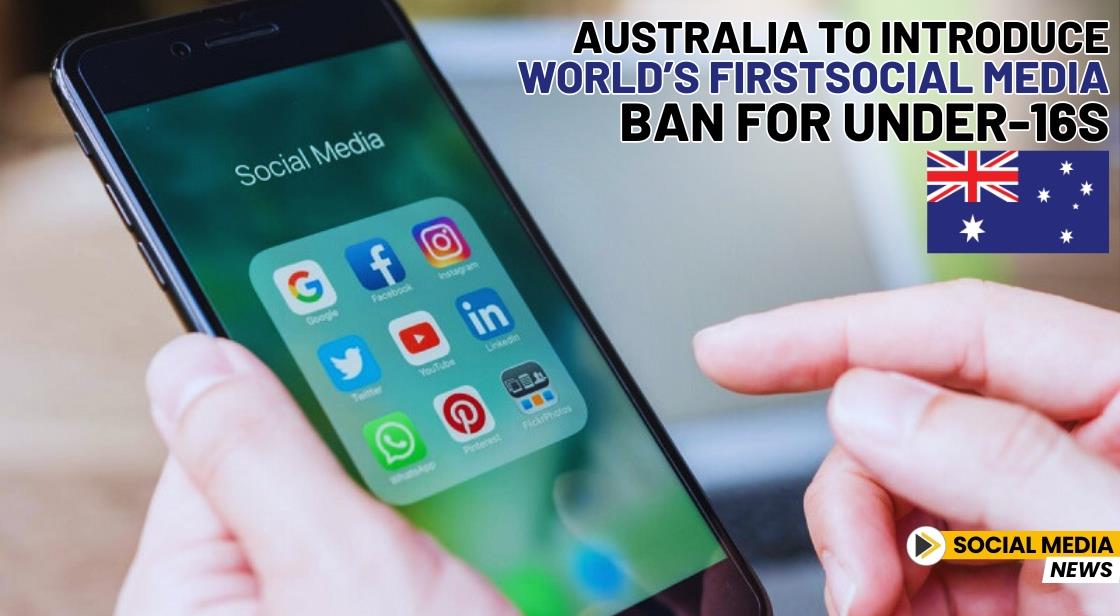Australia to Introduce World’s First Social Media Ban for Under-16s

News Synopsis
Australia is preparing to introduce a groundbreaking law that will prohibit children under the age of 16 from using popular social media platforms like TikTok, Facebook, Instagram, and Snapchat. This new law aims to protect young users from harmful online content, creating a safer digital environment for minors.
The Goal: Protecting Children from Harmful Content
Communications Minister Michelle Rowland announced the initiative, highlighting the need to shield children from disturbing and potentially dangerous content on social media. According to Rowland, young people are often exposed to harmful material, such as violence, drug use, and eating disorders, while engaging with these platforms. The law is designed to mitigate these risks by restricting access for users under 16.
Penalties for Non-Compliance
Under the new legislation, social media companies that fail to comply with the age restriction regulations could face substantial penalties. These companies could be fined up to AU$50 million (approximately $33 million) if they do not implement the required age verification systems and ensure minors are unable to access their platforms.
A One-Year Grace Period for Implementation
The law provides social media companies with a one-year window to enforce the age restriction. During this period, platforms must put in place effective measures to block children under 16 from accessing their services. However, the law does not apply to other types of digital services, such as messaging apps, online games, or platforms focused on health and education.
Deletion of Personal Data for Age Verification
In addition to the age restrictions, platforms are required to delete any personal data collected for age verification purposes. If platforms wish to retain this data, they must first obtain explicit consent from users. Failure to comply with these data retention rules could also result in substantial fines, reinforcing the importance of privacy protection alongside the age restrictions.
The Need for Online Safety: Concerning Statistics
The new legislation is backed by concerning findings from a government study. According to the research, two-thirds of Australian teenagers aged 14 to 17 have encountered harmful content online. A quarter of these teens have come across material promoting unhealthy eating habits, underscoring the urgent need for stronger regulation. Furthermore, 95% of caregivers reported significant challenges in managing online safety for their children, illustrating the demand for a solution.
Collaboration with UK-Based Technology Group
To enforce these regulations effectively, the Australian government is working with a UK-based group to explore technology that can accurately verify the age of social media users. These tools, which may include AI-driven age estimation or analysis of online behavior, could help ensure that only users over 16 are able to access platforms covered by the new law.
Debate and Controversy: Industry Pushback and Concerns
The proposed law has sparked significant debate. A tech industry group has criticized the legislation, claiming that it is outdated and fails to account for the complexities of the digital age. Additionally, some child welfare experts express concerns that the ban could isolate teenagers from online communities that are important for their social interaction and development. These groups worry that the law might inadvertently cut teens off from peer support networks they rely on.
Rowland’s Response: Protecting Children, Not Penalizing Users
Despite the criticisms, Minister Michelle Rowland stands firm in her belief that the law is primarily focused on the well-being of children, rather than on punishing users or companies. She emphasizes that the law’s goal is to protect young people from harmful content and to support parents in managing their children’s online safety. This initiative is a part of Australia’s broader commitment to ensuring safer online environments for the younger generation.
Conclusion
Australia’s new proposed law marks a bold step in the global conversation around online safety for minors. By restricting social media access for those under 16 and introducing stringent data protection measures, the government aims to create a safer digital environment. While the law faces criticism, it underscores the growing concern over online dangers and the need for proactive measures to safeguard children’s well-being in the digital age.









